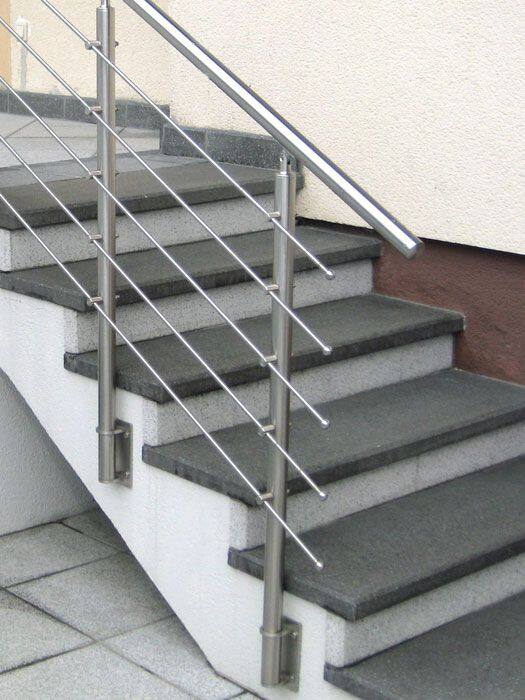Email format error
Email cannot be empty
Email already exists
6-20 characters(letters plus numbers only)
The password is inconsistent
Email format error
Email cannot be empty
Email does not exist
6-20 characters(letters plus numbers only)
The password is inconsistent

News

Comprehensive Guide to Stainless Steel Rod Railing Systems
Stainless steel rod railing systems are becoming increasingly popular in contemporary architecture for their sleek appearance, durability, and versatility. This blog post aims to provide a detailed exploration of stainless steel rod railing systems, covering their benefits, components, installation methods, maintenance tips, and notable applications in various settings.
Introduction to Stainless Steel Rod Railing Systems
The rod railing systems offer a modern alternative to traditional railings, characterized by their minimalist design and robust construction. These systems are widely favored for their aesthetic appeal and ability to complement both indoor and outdoor environments seamlessly.
Benefits of Stainless Steel Rod Railing Systems
The rod railing systems offer several advantages that make them a preferred choice for architects, designers, and homeowners:
- Sleek Appearance: The slender rods and clean lines create a contemporary look that enhances the visual appeal of any space.
- Durability: Stainless steel is resistant to corrosion, rust, and environmental wear, making it suitable for both interior and exterior applications.
- Versatility: These systems can be customized to fit various architectural styles and design preferences.
- Low Maintenance: Stainless steel requires minimal upkeep, typically needing only periodic cleaning to maintain its luster.
Components of Stainless Steel Rod Railing Systems
Understanding the key components helps in planning and implementing a rod railing system effectively:
- Rods: Typically made of stainless steel, these vertical elements provide structural support and visual continuity.
- Posts: Serve as the main supports for the railing system, securing the rods in place.
- Handrails: Optional but often included for added safety and comfort, handrails can be integrated with the rod system.
- Fittings and Hardware: Connectors, brackets, and fasteners ensure secure assembly and stability.
Design Considerations for Stainless Steel Rod Railing Systems
Designing a stainless steel rod railing system involves considering various factors to achieve both functional and aesthetic goals:
Architectural Style
Choose a railing design that complements the overall architectural style of the building or space, whether modern, industrial, or traditional.
Safety Requirements
Ensure compliance with local building codes and safety standards regarding railing height, spacing between rods, and load-bearing capacity.
Customization Options
Explore customization options such as different rod thicknesses, finishes (e.g., polished, brushed), and configurations (horizontal or vertical orientation) to tailor the railing system to specific project needs.
Installation Methods for Stainless Steel Rod Railing Systems
Proper installation is crucial for the functionality and longevity:
Pre-Installation Preparation
- Site Inspection: Assess the installation site to determine the layout, measurements, and any potential obstacles.
- Material Inspection: Verify the condition and specifications of all railing components before installation begins.
Installation Steps
1. Post Installation: Secure the posts in place, ensuring they are plumb and aligned according to the approved layout.
2. Rod Assembly: Attach the stainless steel rods to the posts using appropriate fittings and hardware, maintaining consistent spacing and alignment.
3. Handrail Installation: If included, install the handrails securely to the posts and rods, ensuring they meet safety requirements.
4. Final Checks: Inspect the entire railing system for stability, alignment, and compliance with design specifications before finalizing installation.
Maintaining Stainless Steel Rod Railing Systems
To preserve the appearance and functionality of rod railing systems:
- Regular Cleaning: Wipe down the railing with a mild detergent and water solution to remove dirt and debris.
- Polishing: Use a stainless steel cleaner and polish to maintain the shine and prevent corrosion.
- Inspections: Periodically inspect fittings, fasteners, and rod connections for signs of wear or loosening.
Applications of Stainless Steel Rod Railing Systems
The rod railing systems find diverse applications across various settings, including:
- Residential Properties: Enhance balconies, staircases, and decks with a sleek and modern railing solution.
- Commercial Buildings: Provide safety and aesthetics in office buildings, hotels, and retail spaces.
- Public Spaces: Offer durability and visual appeal in parks, plazas, and transportation hubs.
Case Studies: Successful Implementations of Stainless Steel Rod Railing Systems
Modern Residence A: Integrating Contemporary Design
Modern Residence A, designed by Architects Plus, incorporated a stainless steel rod railing system from Design Innovations Ltd. The system's minimalist profile complemented the home's sleek interior, providing unobstructed views and a sense of openness while meeting stringent safety standards.
Urban Office Complex B: Balancing Functionality and Style
Urban Office Complex B, renovated by Builders Inc., opted for a custom stainless steel rod railing system by Urban Steelworks. The system not only enhanced the building's exterior with its clean lines but also provided robust support and durability in a high-traffic environment.
Conclusion
Stainless steel rod railing systems offer a blend of modern aesthetics, durability, and functionality suitable for a wide range of architectural and design applications. By understanding their benefits, components, design considerations, installation methods, maintenance practices, and real-world applications, architects, designers, and homeowners can make informed decisions to elevate their spaces with a timeless and elegant railing solution. Whether for a residential renovation or a large-scale commercial project, the railing systems stand out as a versatile choice that combines practicality with contemporary style.

